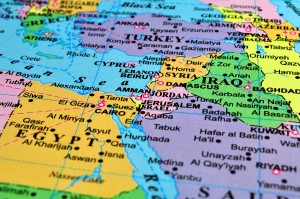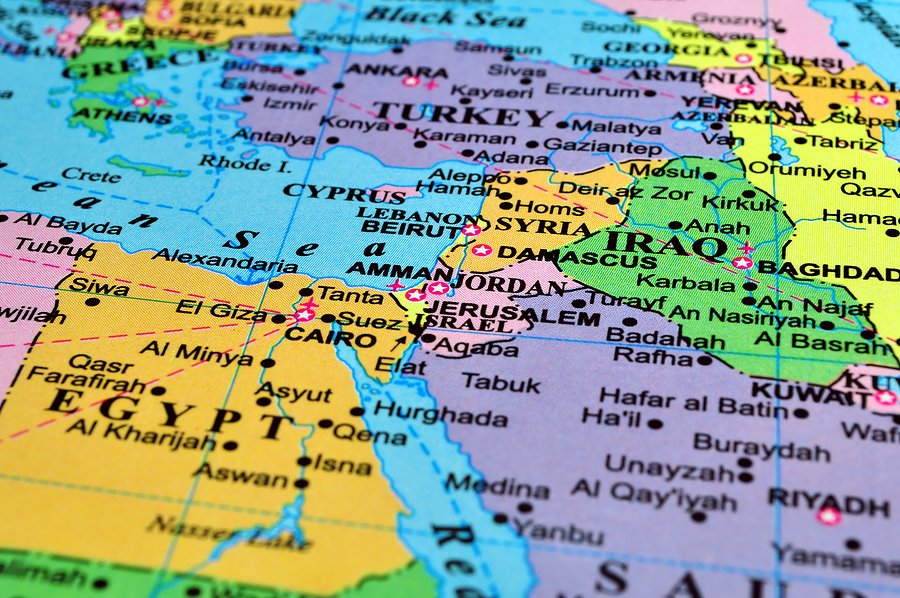2012-08-27 By Richard Weitz
Despite their deep historical, cultural, and economic ties, relations between Iraq and Syria have been characterized by mutual suspicion and hostility during much of the last half century.
The two countries have distinctly different religious compositions. Most Syrians are Sunnis, while most Iraqis are Shiites.
In practice, the effects of these differences were reduced since minority-dominated governments ruled both countries. The Sunnis ruled in the case of Iraq, and the Alawites (an offshoot of Persian Shia Islam) ruled in the case of Syria.
Both states also have large Kurdish minorities that their governments have repressed and exploited. Relations began to improve when Bashar al-Assad succeeded his father as Syria’s president in 2000.

Cooperation grew after 2006, when Shiites began consolidating their power in Baghdad and the Iraq Baathist Party was completely suppressed, but the Syrian government’s brutal domestic crackdown since early 2011 has alienated Damascus from other Arab countries and forced the Iraqi government to walk a delicate balancing act between the Iranian-backed al-Assad government and the expanding efforts by Turkey, Persian Gulf monarchies, and Western governments to change the regime in Damascus.
Iraq and Syria comprise the historic land of Mesopotamia, with many shared ethnic and cultural elements.
The victorious allied powers arbitrarily created the modern Iraqi and Syrian states at the end of World War I.
Since the reign of King Faisal in the 1920s, Iraqi leaders had been dreaming of combining Syria with Iraq. The ideology of the Baathist parties that came to power in in Syria in 1963 and in Iraq in 1968 stressed the principle of pan-Arabism, with the goal of unifying the Arab “nation” into a single state. That the Baathist Party achieved power only in these two countries might reflect their historically contested geographic coherence and legitimacy.
Nevertheless, Iraq and Syria came to be ruled by rival wings of the Baath Party, and nationalist sentiments came to predominant in both countries as dreams for pan-Arab unity fated due to their failure to unite against Israel or other non-Arab actors let alone their limited success of any positive agenda that transcended all these countries.
Each of the competing factions claimed to represent the true party and challenged the credentials of the other, including by allowing exiles to organize on their territory and by supporting Kurdish terrorist strikes in the other’s territory. For example, Syria became a haven for those who opposed Saddam’s regime, especially Iraqi Baathists ousted in power struggle.
Political disputes, border tensions, demographic differences, and personal animosities between Syrian and Iraqi leaders have trouble relations between the two countries for many years.
For decades, rival wings of the pan-Arab Baath Party governed the two countries.
The allocation of water from the Euphrates, which originates from Turkey and flows through Syria and central Iraq, has been another source of regional tensions.
Relations were also strained due to their traditional rivalry for pre-eminence in the Arab world, allegations of interference in each other’s internal affairs, disputes over oil transit fees and their stances on Israel, and suspicions that they were aiding the opponents of the other’s governments with money, training, and arms.
During the 1973 Arab-Israeli War, Iraq sent military forces to the Golan Heights in order to bolster Syria’s crumbling position, but it had to withdraw them when al-Assad accepted UN Resolutions 242 and 338. Iraq then refused to cooperate with Syria unless Damascus denounced the resolutions, which implied recognition of Israel.
Furthermore, Syria’s intervention in Lebanon’s civil war in 1976 on the side of rightist Christians against a leftist Muslim-Palestinian alliance aggravated Iraq-Syrian tensions. Iraq’s main concern was allegedly that Syria could succeed in bringing Lebanon, Jordan, and the Palestinians under its control, transforming Syria into a major regional power center that could rival Baghdad.
In 1978, the two rival regimes briefly found common ground in opposing Egypt’s separate peace agreement with Israel. They combined efforts to dissuade other Arab regimes from following Egypt’s lead. In October 1978, Iraq and Syria signed a Charter for Joint National Action/Joint National Memorandum in which they agreed to move toward “military and eventual political unity.”
But the distrust between Baathist leaders Hafiz al-Assad and Ahmed Hassan al-Bakr in Iraq overwhelmed their incentives for partnership.
Relations worsened even more when Saddam Hussein came to power in Iraq in 1979; he accused Syrians of complicity in a plot to unseat him.
In August 1980, Syrian diplomats were ordered to leave Baghdad after Iraqi authorities claimed to have found large quantities of explosives from the Syrian embassy. Two years later, Syrian President Hafiz al Assad severed diplomatic relations with Iraq in 1982, accusing Saddam’s regime of supporting Syria’s Muslim Brotherhood, the main opposition force in the country.
The oil produced in northern Iraq has historically been exported via Syria and Lebanon as well as through the less secure route from Basra and through the Persian Gulf. Syria would periodically exploit the leverage provided by this transit by threatening to close these pipelines unless Iraq paid higher transit fees.
During the Iran-Iraq War, Syria shut down the pipelines to assist Iran’s war effort, leading Saddam to accuse al-Assad of betraying the Arab cause. When Saddam invaded Kuwait in 1990, Syria responded by joining the international coalition expelled Iraqi forces from Kuwait.


